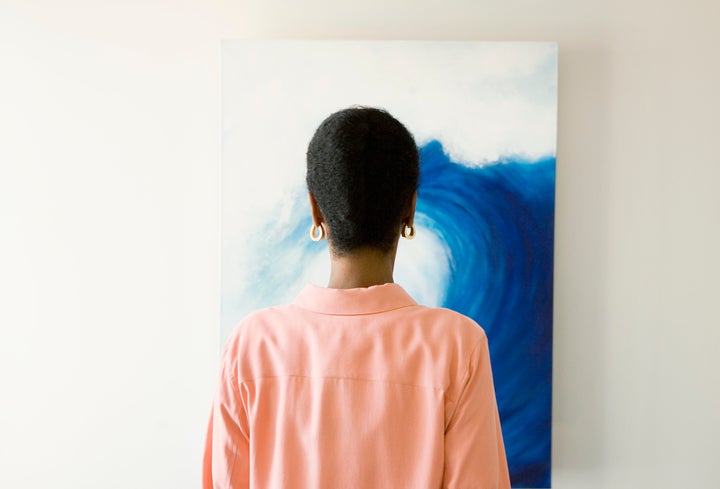
Around 41% of London’s population are from Black or Minority Ethnic backgrounds. However, middle-class cultural spaces across this city – including art galleries, the theatre, classical music concert halls, opera houses, and literary, history, and film festivals – are dominated by white consumers and producers. Through interviews with thirty-two black British professionals from the Caribbean and African diasporas, and visiting middle-class cultural spaces in London, for the past four years I have explored the racialised barriers to the consumption of ‘middle-class culture’.
One theme in the research I’m presenting at the British Sociological Association’s annual conference in Newcastle today is that middle-class cultural spaces in London are dominated by white audiences. This is not coincidental, and neither is it the fault of the excluded. Rather, this demonstrates the wider point that middle-class identity and culture are often articulated around the norms and identities of whiteness. This means that almost all the participants of my study had stories of being made to feel unwelcome in middle-class cultural spaces. From one participant stating, “Sometimes I think people look at me more than the art”, through to another participant referencing her colleague, a trustee of the Royal Opera House, being asked in a patronising voice, “Oh hello, is this your first time at the opera?” my research recounts narratives of how black people are shown their unwelcome status in middle-class cultural spaces. These acts can be understood as micro-aggressions which silently sustain the whiteness of middle-class cultural spaces where, as Sara Ahmed comments, “Sticking out from whiteness can thus reaffirm the whiteness of the space.”
Middle-class cultural spaces also exclude authentic black narratives, histories, and identities. For instance, one lawyer I talked to said of the National Gallery, “I just find it so boring and bullshit because it’s just like, it’s just the same old thing. I don’t see myself there.” This absence of black representation stems from the devaluation of blackness in British society, and by extension the lack of recognition that black people are given as middle-class subjects in the white imagination, both which are used to justify the black exclusion in middle-class cultural spaces. Many of my participants thus criticised the way that black people and histories are treated in this middle-class cultural sphere, with cultural institutions increasingly adopting ‘tokenistic’ inclusion policies. Many participants praised the Tate Britain and Tate Modern’s 2017 exhibitions Stan Firm Inna Inglan: Black Diaspora in London, 1960s-70s and Soul of a Nation: Art in the Age of Black Power, but also emphasised how such institutions will only do one annual ‘black exhibit’ to avoid charges of racism. As one participant, who previously worked on the Arts Council, stated, “It would tick a box to say it’s done it. And that’s it, that’s their black project done for the year.” The fact that the Tate Modern held a related open event to Soul of a Nation, hosting Reni Eddo-Lodge to discuss Why I’m No Longer Talking to White People About Race, booking a venue for only 100 people (around 400 people turned up, the majority of whom were people of colour) further speaks to the lack of authentically inclusionary attitudes that art institutions have when it comes to race.
None of this means that black people necessarily self-select out of traditional middle-class cultural pursuits. While the professional world is white dominated, such cultural knowledge is often construed as invaluable for upward mobility and social cohesion in the professional workplace. While focusing on the cultural arena, therefore, my work comes back to the racial imbalance in economic power plaguing British society. If the ‘cultural capital’ that is expected among the middle-classes is supported by white institutional complexes, then we need to appreciate how cultural arenas are sustaining racialised economic disparities.
My research is both pessimistic and optimistic. Pessimistically, so long as anti-blackness is ingrained into the fabric of British society, then black exclusion is going to be common to middle-class spaces. Any attempts to make middle-class cultural spaces more ‘inclusive’ and ‘diverse’ will necessarily fail unless there are larger society-wide efforts to undo the conflation between middle-classness and whiteness, and to undo the ideologies which sustain the racial hierarchy more broadly. Optimistically, my research suggests how cultural institutions can make racial progress. Firstly, such institutions must stop using discourses of ‘diversity’ and ‘inclusion’ if they are only going to implement these policies tokenistically. Rather, people of colour must be incorporated into the core of these institutions themselves, where the ideal and ‘normal’ consumer is no longer considered to be white and middle-class. Such institutions must therefore stop their practice of having an ‘annual black exhibit’, often hidden away in a small room or, as used to be the case in the National Portrait Gallery, placed next to the toilets. Having a Chris Ofili tapestry in your institution does not make you ‘inclusive’ or ‘diverse’ if you use that very inclusion to prove your commitments to inclusivity and diversity. Presently, the tokenistic attitude of major cultural institutions means that excellent places like the Black Cultural Archives and Autograph ABP are relied on to do the ‘not-white arts’. This paints a picture of ‘black art’ for ‘black people’ while ‘(white) art’ is said to be universally interesting and relevant to everyone. We need to move beyond this cultural myopia to roll back the presence of racial hierarchisation in a society that is often declared to be ‘post-racial’, or, at best, ‘less-racial’ than the (dis)United States across the Atlantic.
